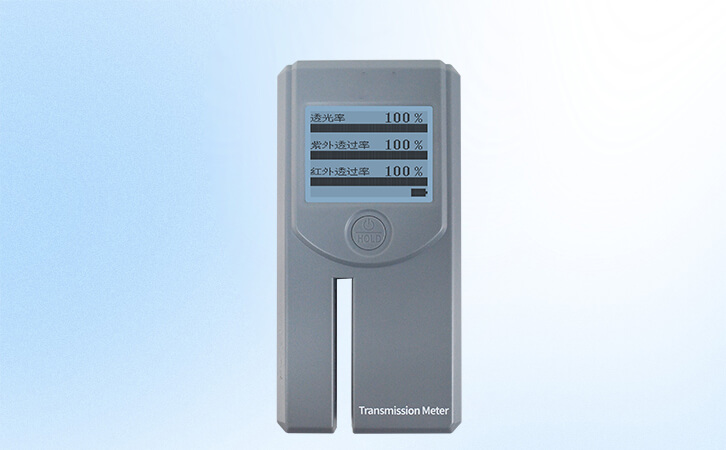
86163 Transmission Meter
Ideal for testing window tint, window films, and side windshields
Three light sources: visible light, ultraviolet (UV), and infrared (IR)
Three display modes available
Rotatable screen for easy data viewing
Compatible with metallic and ceramic films
This device is designed to measure the optical properties of uniform, transparent materials such as solar films, film-coated glass, insulated glass, and automotive side windows. Users can select different display interfaces to view infrared and ultraviolet rejection rates, as well as light transmittance.
The 86163 Transmission Meter is widely used in industries such as solar film production, glass manufacturing, automotive dealerships, and car detailing shops. It is suitable for display, manufacturing, quality control, and inspection applications. The device can measure the optical properties of solar film, film-laminated glass, PC materials, and window glass.

86163 transmission meter tests film
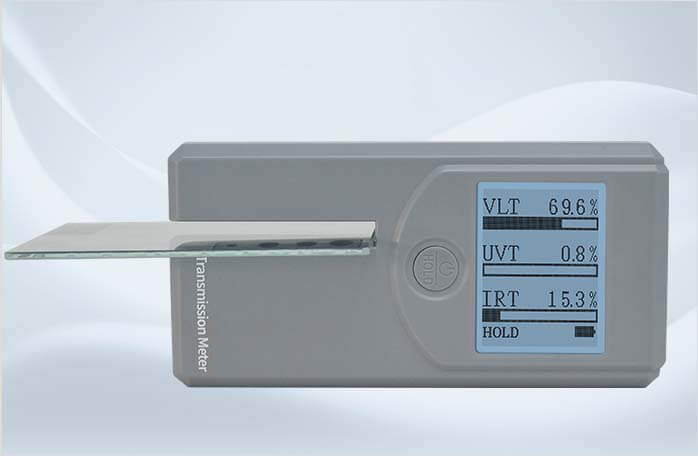
86163 transmission meter tests film glass

86163 transmission meter tests PC material
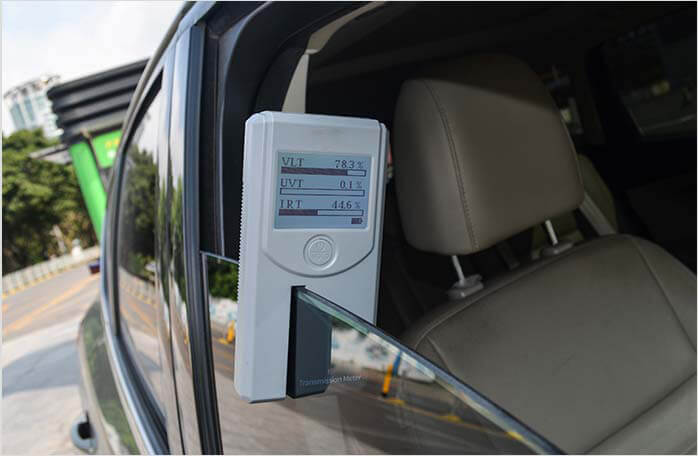
86163 transmission meter tests car side glass
Parameters
| Parameter | Value |
|---|---|
| UV Peak Wavelength | 365nm |
| IR Peak Wavelength | 940nm |
| Visible Light | 380-760nm, conform to the CIE photopic luminosity function |
| Accuracy | ±2% (Colorless and transparent material) |
| Resolution | 0.1% |
| Test Slot | 6mm * 58mm (W*D) |
| Dimension | 146 mm ×73 mm ×24 mm (L*W*H) |
| Display | 128*128 Dot matrix LCD |
| Weight | 187g (Include batteries) |
| Power Supply | 4*AAA alkaline batteries |

86163 transmission meter appearance
Features
Simple Operation, Fast Results
The transmission meter is easy to use and provides quick readings. Once the material is placed in the test slot, the results for all three light sources appear instantly on the screen.
Parallel Light Path – Suitable for Side Windows
With a 6mm wide test slot and parallel light path design, the 86163 meter can accurately measure the optical properties of car side windows.
Rotatable Display for Better Visibility
The user-friendly screen rotates in four directions, making it easy to read data at various testing angles.
Real-Time Automatic Calibration
The device features dynamic self-calibration upon startup, ensuring accurate measurements every time.

Three Display Modes
Users can switch between three modes: rejection rate, transmittance, or light transmission percentage.
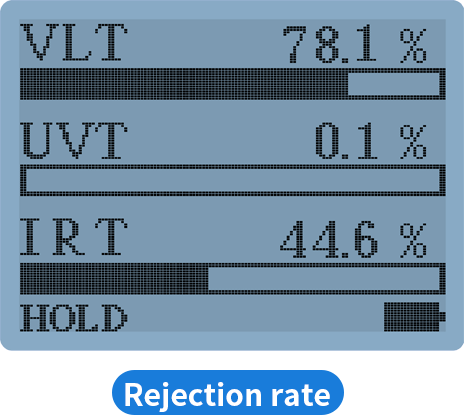
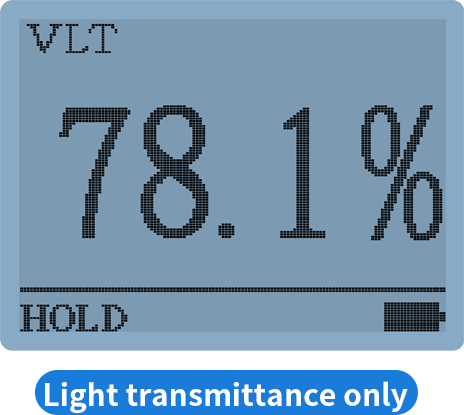
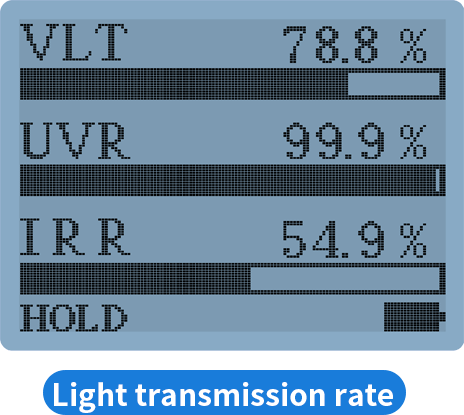
Data Hold Function
Press the "Hold" button to lock measurement data on the screen. This allows you to keep results displayed even after removing the sample.

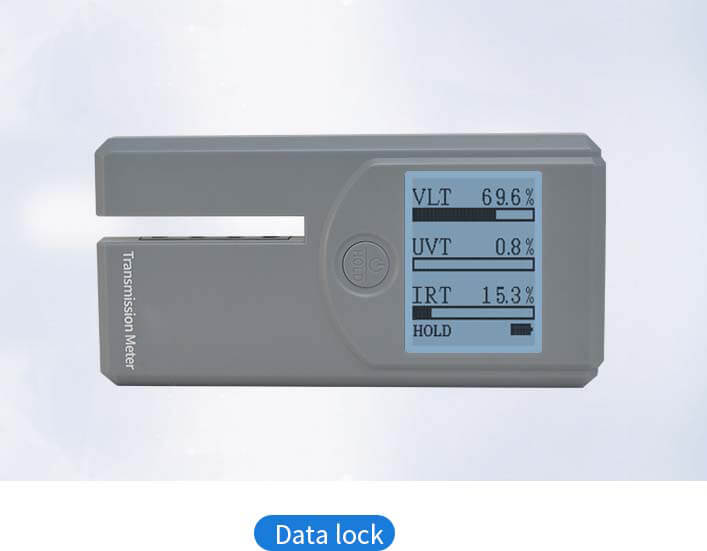
Compact and Portable Design
With a small, lightweight body and anti-slip design, the transmission meter is easy to hold and ideal for on-the-go use.

LCD Dot Matrix Screen with Backlight
Suitable for use in low-light environments.

Low Power Consumption
Provides over 100 hours of continuous operation.

Auto Power-Off
The meter will shut off automatically after 3 minutes of inactivity.
Packing
| No. | Description | Quantity | Unit |
|---|---|---|---|
| 1 | 86163 Transmission Meter | 1 | set |
| 2 | User Manual | 1 | pcs |
| 3 | Certificate / Warranty Card | 1 | pcs |
| 4 | Packing Box Dimension 18*13*5 cm(L*W*H) | 1 | pcs |
FAQ
-
1. The difference between 86163 (940nm) and 86163A (1400nm) window film transmission meters
The main difference between 86163 and 86163A is that the peak wavelength of the built-in infrared light source is different, 86163: 940nm, 86163A: 1400nm. These two wavelengths are more representative, most of the absorption film has a better rejection effect at 940nm. The metallic film (insulation by reflecting heat) has a better rejection effect at 1400nm. Please choose the appropriate model according to your own film.
-
2. What are the advantages of 86163/86163A over previous window film transmission meters?
The screen can rotate in four directions;
Three display interfaces can be switched:
1) UV rejection, IR rejection, VL transmittance
2) UV transmission, IR transmission, VL transmittance
3) VL transmittance